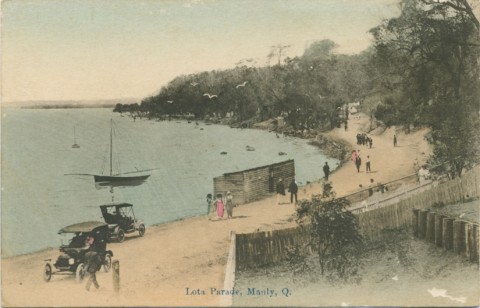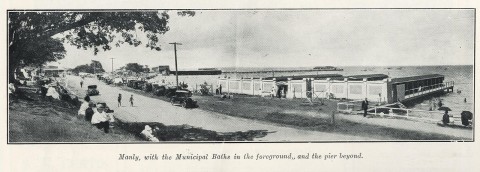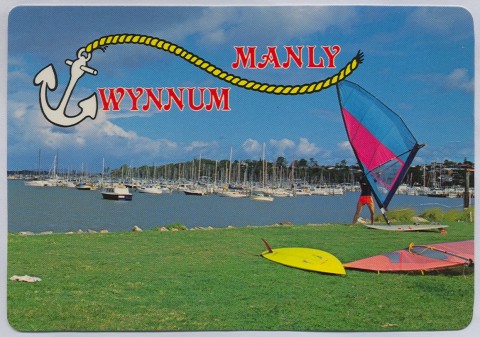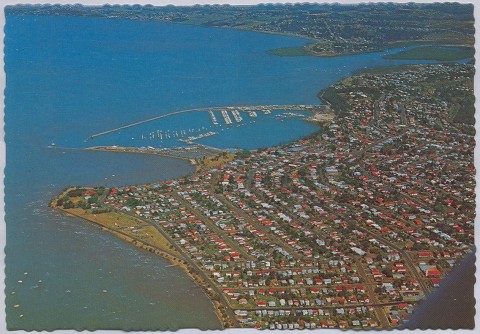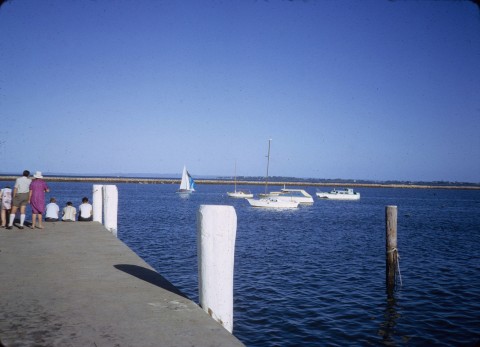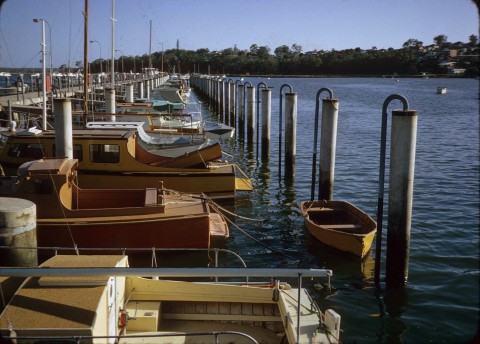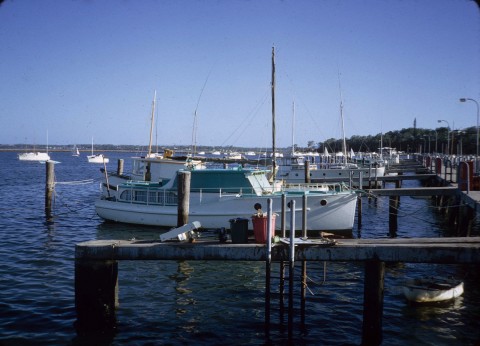Manly, a beach, boating and residential suburb on Waterloo Bay (a coastal indent on Moreton Bay) is 15 km east of central Brisbane.
Land sales first occurred at Manly in the 1860s, and one of the purchasers established a sugar plantation and built Wyvernleigh House overlooking Waterloo Bay. The house site in Oceana Terrace is now occupied by the Catholic church and the St John Vianneys primary school (1941).
In 1882 the Manly Beach estate was put up for sale, the name probably inspired by Manly in Sydney. All this occurred before the opening of the Cleveland railway line (1889), and the local station was named Manly rather than the better known Wyvernleigh.
By 1900 Manly's population approached 1000, or more during weekends and holidays. The district's commercial and administrative centre was at neighbouring Wynnum, so shops catered for limited everyday needs. During 1910-20 the Manly Amateur Swimming Club was formed, the primary school (1910) was opened, the jetty was extended and an Anglican hall was opened. The school of arts ('Wynnum-Manly') was in Wynnum, as were the Wynnum-Manly sailing club and the agricultural, horticultural and industrial society.
Tidal baths were built in 1926, lasting until 1959 when a cyclone damaged them. In the early postwar years Manly's population had not changed significantly since the 1920s. Shops ran along Cambridge Parade, there were a few more churches, a progress association hall in Melville Terrace and the New Strand cinema on the Esplanade. In 1933 a protective retaining wall was built as an unemployment-relief project at the corner of Wellington and Falcon Streets. The ensuing 200 metres-long wall is listed on the Queensland heritage register. The surest sign of coming urbanisation was a new service reservoir (1954). There were new schools, Catholic primary (1941) at Wyvernleigh and Manly West High School (1958). The Manly boat harbour was begun in 1962, receiving the distinction of the Royal Yacht Club moving there in 1964 from Kangaroo Point. More prosaically, Edgell had a vegetable cannery at Manly West, and the Wynnum-Manly sewerage scheme was completed in 1970.
The shopping centre avoided both redevelopment and destructive competition from a drive-in facility: that was put at Wynnum West in 1980. As a result Brisbane's Lord Mayor could persuasively enthuse in 1992 about preserving the Manly Harbour Village. The boating facilities were modern and extensive but out on the water, and the maritime inhabitants could stroll among the shops and cafes.
Not only did the better-heeled patronise the harbour and shops, but they chose to reside in Manly. Local real estate went from a median $200,000 in 1999 for houses to over $420,000 in 2004. The boat clubs residing at the harbour included Royal Queensland, East Coast Boat Club, Wynnum Yacht Club and Moreton Bay Trailer Boat Club.
Manly's census populations have been:
| Census Date | Population |
|---|---|
| 1911 | 947 |
| 1954 | 971 |
| 1977 | 3861 |
| 2001 | 3590 |
| 2006 | 3815 |
| 2011 | 3702 |
Mervyn Beitz, Mangroves to moorings: stories and photographs of people and events in and around Manly, Manly, Manly Centenary Committee, 1982
Back to Wynnum 1933: a souvenir booklet, Wynnum, Wynnum District Chamber of Commerce, 1933
Betty Nock, History of music in the Wynnum and Manly area, Moorooka, Boolarong Press, 1998
Lota and Manly West entries
